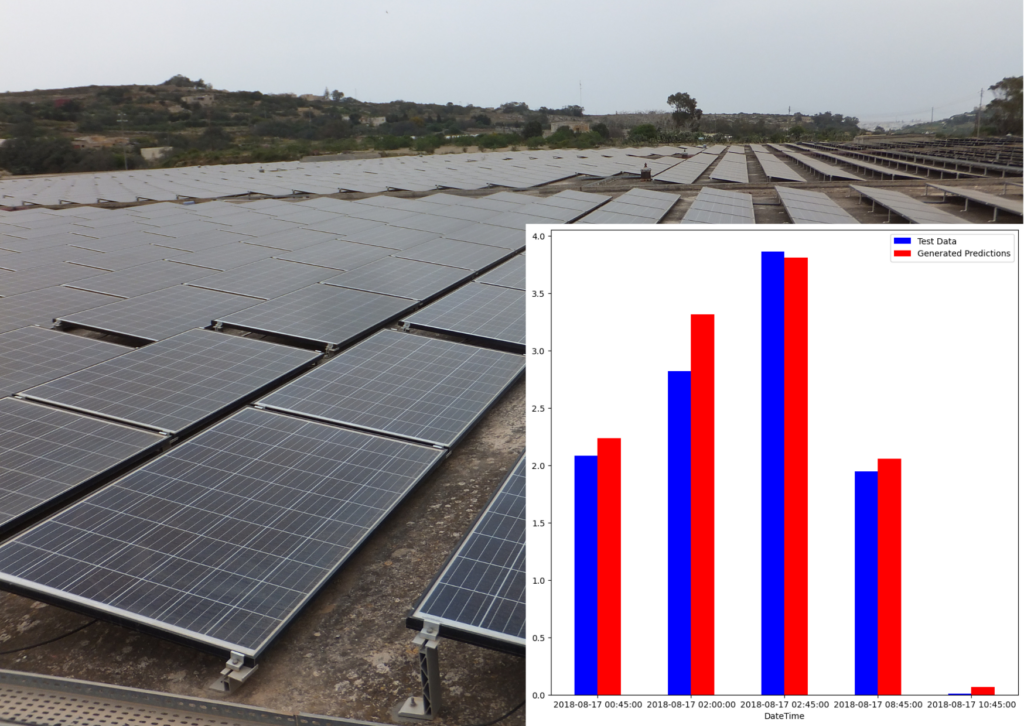In recent years, large-scale solar photovoltaic (PV) systems have established themselves as an economically viable solution to offset fossil-fuelled generated electricity, and these are being increasingly integrated into district energy supply systems. However, solar-generated electricity is intermittent by nature and is highly dependent on weather conditions, which could result in an inconsistent supply. Therefore, it becomes pertinent to add another layer of energy-generation planning and management of electrical-power distribution systems through the integration of PV power generation forecasting tools and machine learning to ultimately render PV power more reliable.
This final-year project analysed different machine learning (ML) approaches in order to identify the most appropriate one for forecasting solar electrical production using time series data of weather and PV power generation. The tool was then further developed and applied for a case study to validate its prediction outcomes.
A review of related literature made it possible to identify various baseline ML and deep learning (DL) statistical methods, which were then investigated in terms of their applicability to the project. These included established methods such as: regression analysis, spatio-temporal correlation, and autoregressive integrated moving average (ARIMA). These statistical models were developed by different scholars to demonstrate how simple ML and more complicated DL models could adapt to intense data fluctuations, highly dimensional and lowly correlated data. Research has shown that the most commonly applied DL architecture for PV power generation forecasting was long short-term memory (LSTM), which is a type of recurrent neural network. This architecture can learn the order dependency in time series data. The project also investigated the performance of LSTM, comparing it to other baseline ML models considered in the study.
In order to validate this task, a case study based on the publicly available Photovoltaic Output Database (Yao et al., 2021) was carried out. This database consisted of various parameters, such as: date and time, global horizontal irradiance, direct normal irradiance, temperature, humidity, wind speed, wind direction, atmospheric pressure, and PV energy generation. As anticipated, certain parameters ‒ such as solar energy, cloudiness, temperature, and wind speed ‒ tended to have a greater impact on PV output and indirectly on the accuracy of the prediction model. Different parameter combinations were studied, including seasonal and diurnal variations in weather parameters and their impact on the accuracy of the developed prediction models.
This project demonstrated the extent to which prediction models could be integrated as an additional layer in the forecasting of energy supply and demand in large energy-distribution systems. It is believed that this could place the electricity distribution operator in a better position, in terms of preparedness, to ensure optimal efficiency of the electrical distribution system.

Figure 1. Bar graph of predictions and true values
Student: Evangeline Azzopardi
Supervisor: Dr Joel Azzopardi
